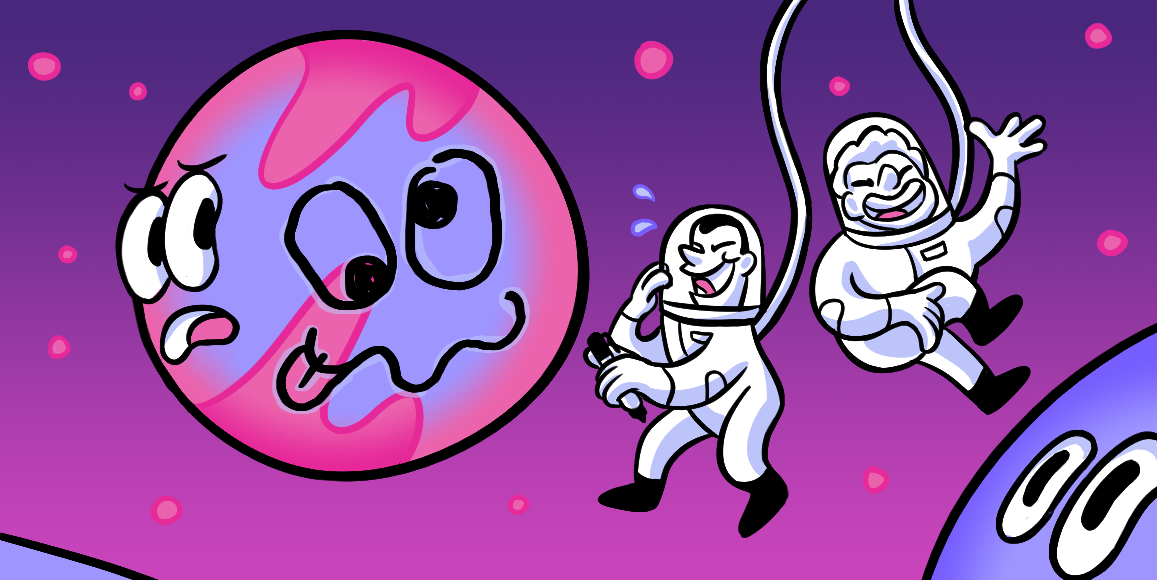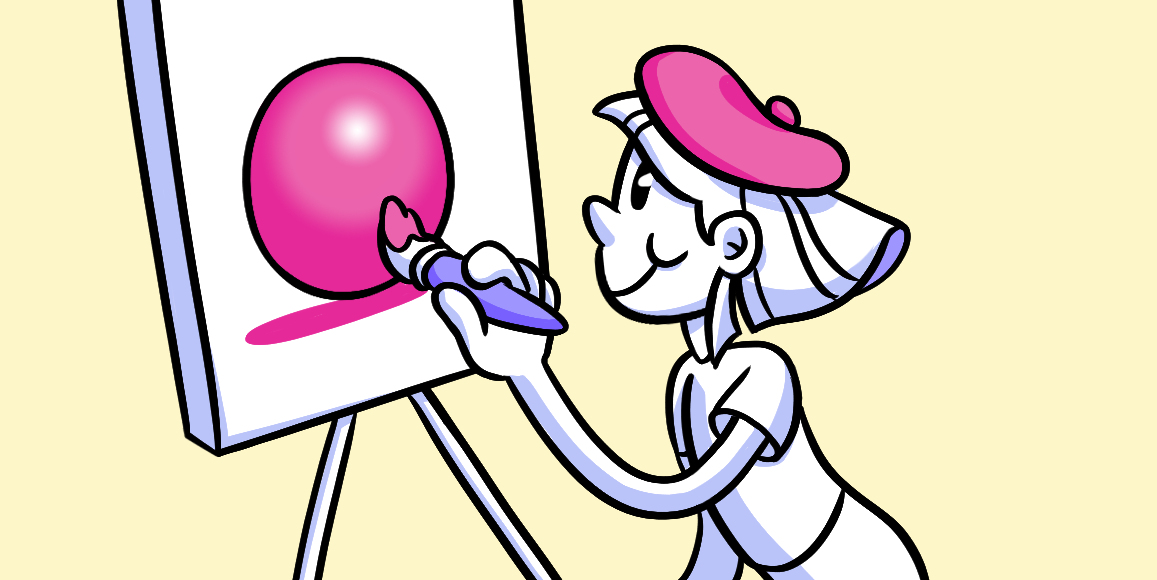Storytelling That Captivates
Method: Storytelling Deliverable: Story, Experience Map
Stories are how we learn. It’s the language of how we relate to one another. Storytelling is one of the oldest forms of communication. And one you can use to reach your target audience.
A story is a linear or radial progression of ideas that expresses key opportunities in a product, service or prototype. It can be visual, or just a linear list of important ideas. Anything that grabs the attention of the project team to communicate the value of the product to your target audience.
An experience map is a diagram for designing products. They meld our business goals and users’ needs in a single image.
These maps are an all-inclusive design strategy blueprint. They highlight how to keep the business happy, as well as your customers and end users.
With one, you’ll uncover unforeseen opportunities that’ll undoubtedly ensure customer satisfaction. You’ll also head in the right direction to achieve your business goals.

Guide Objective
The guide objective of this section is to create stories that reveal customer problems and surface new opportunities.
Goals of a Story and Experience Map
Stories should be as detailed or simple as needed. This will help a project team understand the intent of the design work. If a story can be told with a single image, then it’s not necessary to use 15 visuals. If a story needs 15 pictures to be understood, then definitely don’t try to do it in 5.
With that in mind, our goals are:
- Create a flow or series of sketches to encourage collaboration and team engagement.
- Inspire the project team to construct stories from opportunities sketches.
- Learn to synthesize the most important ideas in a product into a compelling and exciting story.
Method
Not every story has to be visual. But your story must excite the team.
An uninspired story will be a flop with the team. An engaging story, however, doesn’t have to be complex or elaborate. In some cases, you can tell a cohesive story with just one image in an experience map.
Stories help us:
- Reveal the behavior of users
- The goals they wish to accomplish
- The motivation that drives them towards outcomes
Stories encourage project team collaboration, design discussion and product innovation. They give us a better understanding of our users, and help us test our hunches about what is important in their needs.
Stories turn product ideas into tangible narratives that create empathy for users, stakeholders and the development team.
The foundations of a good story rely on good business fundamentals:
- Mantra – Basically, a rally cry
- Purpose statement – A broad inspirational statement
- Mission statement – A sentence that establishes a specific goal
- Vision statement – The end result of your mission statement
Establish your goals so there is a clear conclusion to the story:
- What are you trying to achieve with your end users?
- What is the main purpose of the relationship?
- Your sketches should embody the personality and character of the brand. Everything has a brand, even if you don’t sell a product or service.
- Make sure the story is in sync with your strategy.
Identify your audience:
- The end user should be the focal point of the story. There are many demographics that can influence your design, such as age, gender, profession and technical competency.
- The customer is a business’ lifeline. Without customers, there is no need for a product. Without a product, there is no need for the business. These concepts are all as intertwined as our design strategy framework.
Creating Your Story
Start creating stories in two ways from prioritized opportunities:
1. Bucket similar opportunities sketches
Put them in linear narrative with a theme. The end result of this approach is a linear set of sketches.
Some tips:
- A story should be low fidelity and rapidly produced so that it appears flexible and easily changed.
- Sequential art, or storyboarding, is a storytelling method we should all be used to, from cave paintings to comic books..
- Only the most important information should be sketched to maintain a focus on the details the project team wishes to explore.
- A good story will bring the end user into the design process to keep it user-centric.
- Stories help the collaboration and understanding between designers, stakeholders, and developers. Stories should inspire and give designers freedom, not hold them down.
2. Create a design strategy framework
Structure the categories based on how the opportunities align with the business. The end result of this approach is a single page experience map.
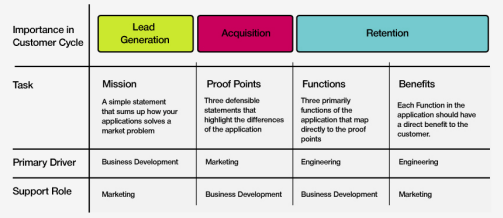
There are four tasks that drive our framework. These help us define the important areas in an experience map.
- Positioning Statement. How are you positioning the product in the desired market?
- Proof Points. A list of three to four one line statements that highlight how the products is different from the competition.
- Functions.Clear functions, features, services or processes that validate each of the proof points. If a proof point cannot be validated with a function, then that particular function/proof point is not realistic.
- Benefits. A user should have clear benefits that are definable, measurable and testable.
A design strategy framework can be used to mesh the world of the business into the world of end users. Remember, the emphasis of the framework is to shape the future prototyping, collaboration and iteration, instead of waiting for all the answers.
- Using a cycle of prototyping, collaborating and iterating, we avoid the pitfall of an abundance of information.
- Over-analysis of opportunities and ultimately analysis paralysis.
- Sinking into analysis paralysis we find ourselves stalled with too many questions to answer. As well as too many possibilities leaving us immobile and inactive.
Deliverable
In order to create a great story, make sure the business has a clear and succinct mission statement. Without the mission statement, you have no guide or narrowed focus on how to proceed with the business goals. A mantra, purpose statement, mission statement and vision statement can all support better storytelling.
Examples
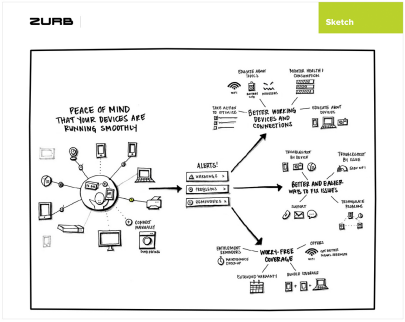
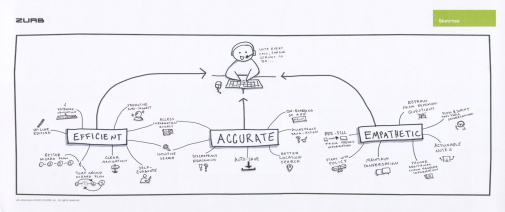
Next Up: Journey Maps










